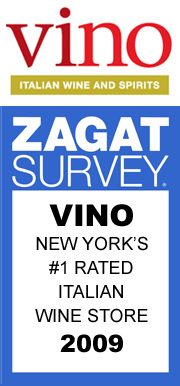
Taste 6 Sparkling Wines at Vino this Fri. & Sat.
Fri. & Sat., December 29-30
Ring in the New Year Italian Style
FREE
Fri., 5:30-7:30 – Sat. 4:30-6:30 @ Vino
For information on these or any other events at Vino and/or I Trulli, please email events@vinosite.com.
* * *
Winter/Spring 2007 Class Schedule
We are please to announce that the Winter/Spring 2007 class schedule is now online. We’ve added a number of classes, including “Brunello, Chianti, and Super Tuscans” and “Handmade Pasta with Dora Marzovilla.”
Click here to view the 2007 schedule.
* * *
Wine Opinion: New Year’s all’italiana
This time of year, everyone’s thoughts turn to sparkling wine. For some reason, most people think that the only sparkling wine comes from France. This, of course, is not true. The Italians make wonderful sparkling wine, not only from traditional grapes, but also, from some very unusual grapes. One very good choice is Prosecco, which has great bubbles, is relatively inexpensive, and is the most popular sparkling wine in Italy today.
The sparkling wine, however, that intrigues me the most is the Caluso Spumante, by Orsolani, a wine made from 100% Erbaluce grapes (a variety nearly identical to the Greco of the South). This particular wine is not only great for toasting in the new year but is also a great food wine. What makes a great food wine, you ask? The ability of the wine to go with different types of food. The Caluso Spumante has good acidity (which cuts through the fat of what you’re eating). It has nice fruit flavors (which give body to the wine and make it stand up to flavored foods). And it has a really nice, clean after taste (which refreshes your palate as you change courses in a meal).
It just so happens that on Christmas morning, I had scrambled eggs and white truffles along with the Caluso Spumante by Orsolani. It was a perfect combination: the eggs, of course, were local but the truffles, like the wine, came from Piemonte.
This wine also goes very well with lobster, especially lobster boiled and dressed with lemon and butter. It seems that the fruity flavors of the wine and its good acidity make it a great combination for the fatty meat of the lobster and the butter but it also stands up to the tartness of the lemon.
In Italy, it is considered good luck to eat lentils on New Year’s day. Usually, this is combined with bollito misto, arrosto misto, or zampone. Panettone is also traditionally served on New Year’s, the famous cake of Milano, and it is paired with sweet sparkling wine, such as the Moscato d’Asti from Cascina Castle’t in Piemonte or the Malvasia Frizzante by La Stoppa in Emilia-Romagna. The latter is a very unusual wine that you don’t see very often. It’s the kind of wine that the farmers in the Italian countryside make. The first time I tasted this wine, I thought to myself this would be a great combination with any type of biscotti, panettone, or pan d’oro. It’s a perfect end-of-the-meal wine: it’s low in alcohol and fresh and bubbly and tasty.
This is Charles Scicolone, like 007, raising a glass of bubbly to all of you and wishing one and all a happy and healthy new year.
Buon 2007 a tutti!!!
–Charles Scicolone, Wine Director, I Trulli and Vino
Charles would love to hear from you: please email him at charles@vinosite.com.



 Posted by Vino NYC
Posted by Vino NYC 



